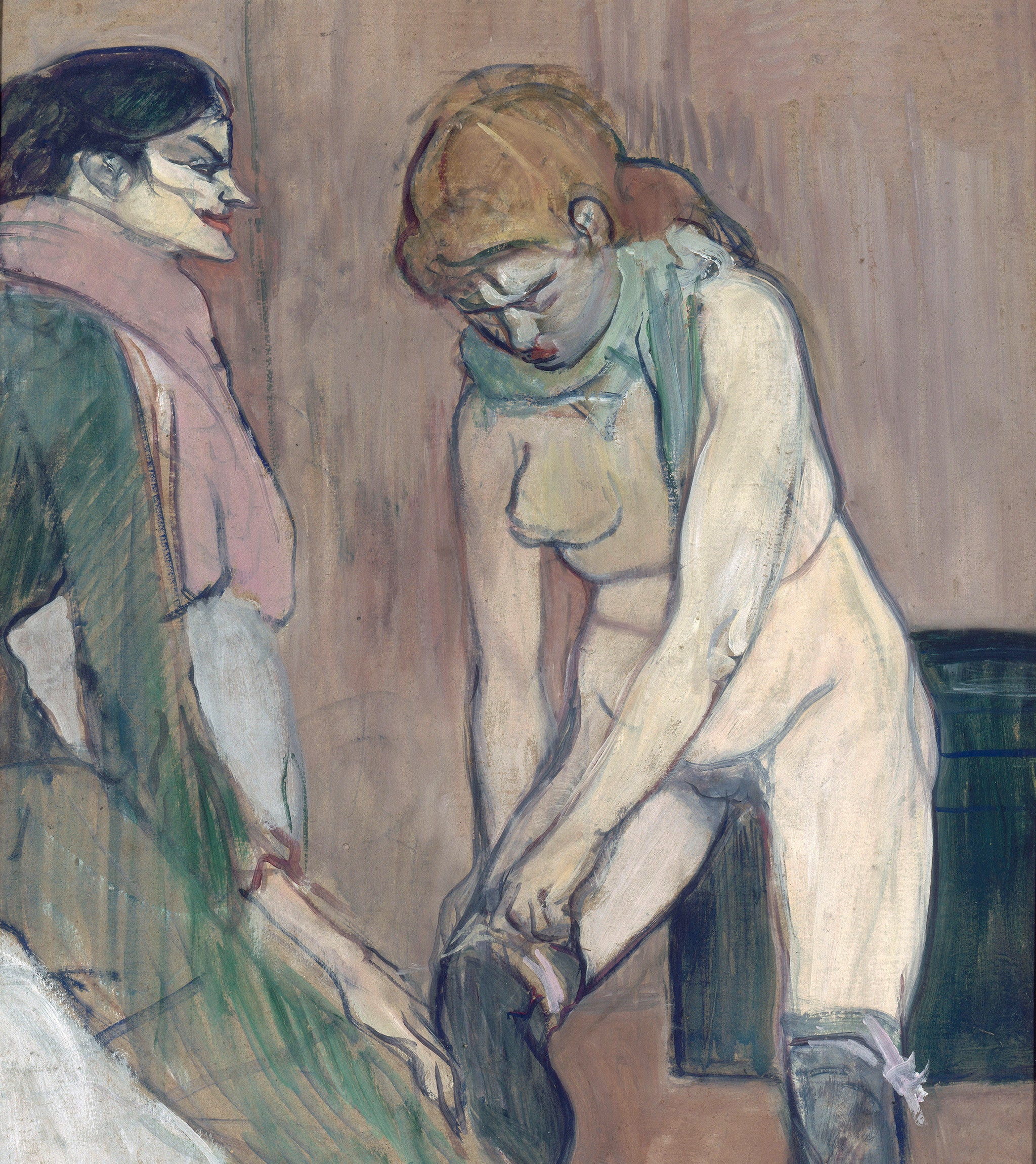This unexpected exhibition shows the compassion in Impressionism
Sympathies of this aristocratic painter lie clearly with the women he depicts in Paris’s brothels


I begin with a small confession: I love Impressionist paintings more than any other school of painting, particularly when the subject matter is Paris and its inhabitants. Of course, some people will think this is like preferring the waltzes of Johann Strauss to the symphonies of Beethoven. However, the recent opening of a big Impressionist show in Paris at the Musée d’Orsay with the astonishing subtitle, ‘Images of prostitution in France, 1850–1910’, has reinforced my enthusiasm.
This may sound like a specialist take on the subject, but it isn’t. For prostitution was a matter of great concern to French society in the second half of the 19th century. So one can find paintings by all the major artists of the period in the exhibition. There are 20 works by Toulouse-Lautrec, seven early Picassos and four Manets – as well as canvasses by Degas, Renoir and Van Gogh.
What worried bourgeois society wasn’t so much the type of prostitution that can be found in any big city or port in the world. Rather, the cause for concern was the brothels that catered for middle-class customers. In Proust’s great novel, Remembrance of Things Past, the visit to a brothel by Swann, a gentleman of the highest social standing, is described. The “manageress” greets him by saying: “I have a little thing you are sure to like.”
In addition, a form of prostitution which has been called “élite prostitution” was common in the high society in which Swann was a well-regarded member. This is where “kept” women, to use a phrase, were paid in expensive gifts instead of cash, the world of grandes cocottes. The case of the French President, Félix Faure, who died in the arms of a grande cocotte at the Elysée Palace in 1899, is the ultimate example.
The bourgeoisie regarded these activities with a mixture of sharp interest and disapproval. It was, by today’s standards, a restricted version of celebrity culture.
Instead of show business stars, there were the mistresses of well-known figures, who often came to enjoy great luxury. In Balzac’s novel Père Goriot, Goriot, who is a retired flour merchant, describes how he asks the maids of his two daughters – who have each climbed up to the status of grandes cocottes – whether his daughters are going out; if they are, he goes to the Champs-Élysées to see them driven by in their carriages. “I wait for them to go past, my heart beats faster when their carriages come by. I admire them in all their fine clothes and the way they smile at me as they go by casts a golden glow over everything, as though it were lit up by a ray of sunshine.”
Goriot, the loving father watching his daughters in their finery, is a figure with whom we can sympathise. But most of the men in the exhibition’s pictures are treated as secondary figures. In Manet’s Nana, for instance, we see the young actress Henriette Hauser standing tall in her undergarments looking directly at the viewer. She is the mistress of the Prince d’Orange. Manet paints the Prince as a minor personality when compared with his mistress. He looks frightened by the exotic bird he has caught in his net of money and prestige.
Similarly in Toulouse-Lautrec’s Passing Conquest, another gentleman, wearing his silk top hat, sits peering at an actress as she tightly laces her corsets. He seems more voyeur than admirer.
What particularly disturbed the middle classes was that predatory women and men might pass you on a fashionable street or climbing the stairs of the opera house, without you being the least bit aware. Several canvasses deal with this predicament. My favourite is Boldini’s Crossing the Street. A well-dressed young woman carrying a bouquet, crosses a street in Paris, walking towards the viewer. There is nothing to reveal her profession, except that she lifts her skirt and exposes quite a lot of petticoat as she moves – and there are no puddles to avoid. What I hadn’t noticed, until reminded by the catalogue, is that behind her, by the curb, is a carriage containing a very smart gentleman who is regarding the lady intently. Once you see that, you think, yes, this is a pick-up. That’s the point of this very charming picture.
Dealing with the same ambiguous situation is Tissot’s The Shop Girl. The viewer is placed inside a haberdashery shop and is getting ready to leave for a sales assistant is holding open the door. In the street a coachman can be seen waiting for his mistress. But at the same time a gentleman in a grey top hat is peering avidly through the shop window. His eye is caught not by the silk ribbons and satins on the counter, but by the two shop girls. Will the predatory gentleman shortly enter the shop? Will he find what he is seeking? The picture is at that point of uncertainty.
But there is nothing problematic about Toulouse-Lautrec’s paintings. The sympathies of this aristocratic painter lie clearly with the women he depicts in Paris’s brothels. His In the Salon: the Couch portrays a mature woman, in a long red dress, awaiting the arrival of a customer. She is dignified, resigned and normal. And so are the two women chatting in The Sofa. The picture conveys friendship between people leading a very hard life.
That’s the point of these Impressionist artists. When you look closely at their work, you see they were above all compassionate.
The exhibition closes in Paris on 17 January 2016 and then moves to Amsterdam from 19 February to 19 June



Join our commenting forum
Join thought-provoking conversations, follow other Independent readers and see their replies